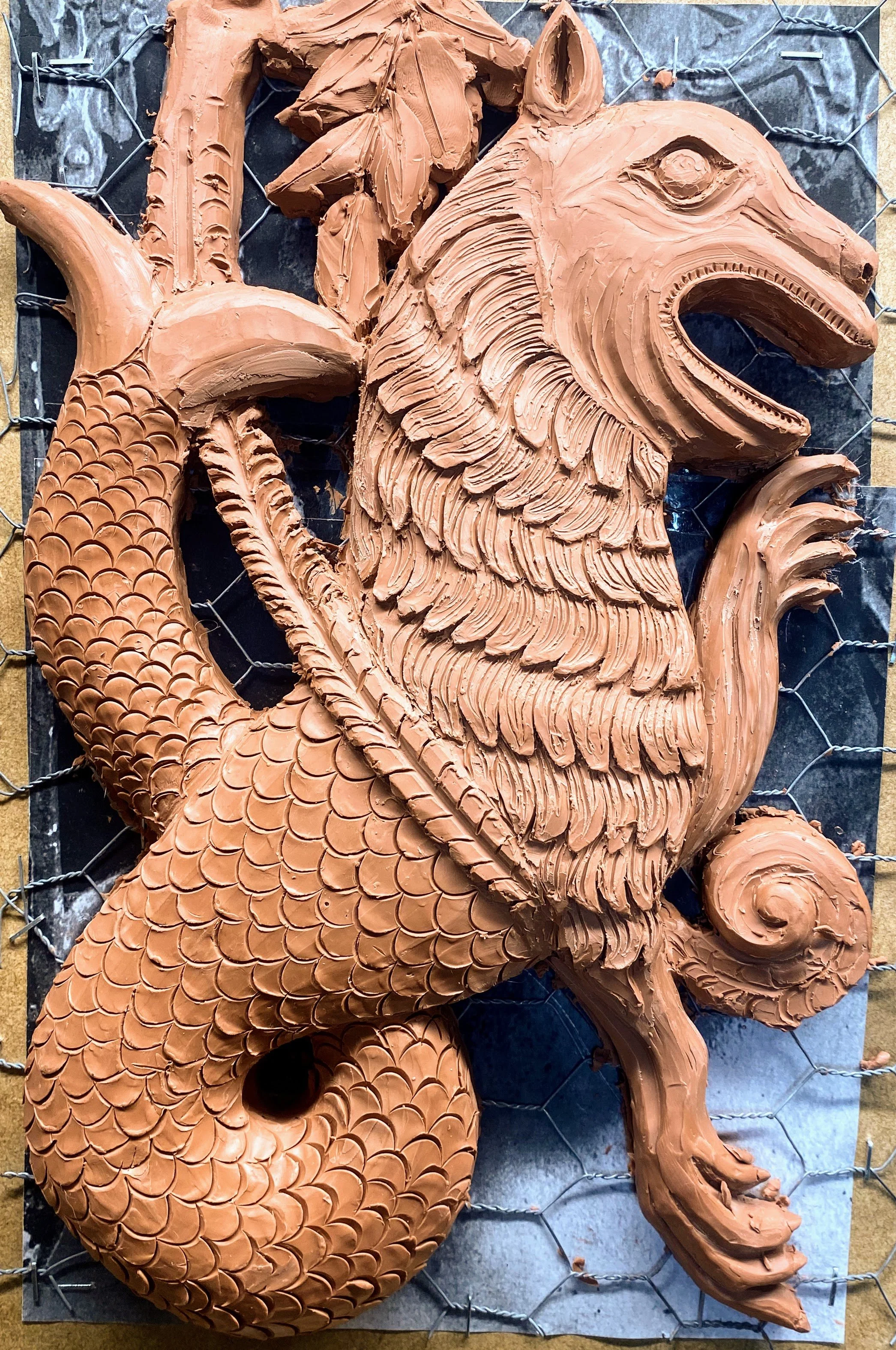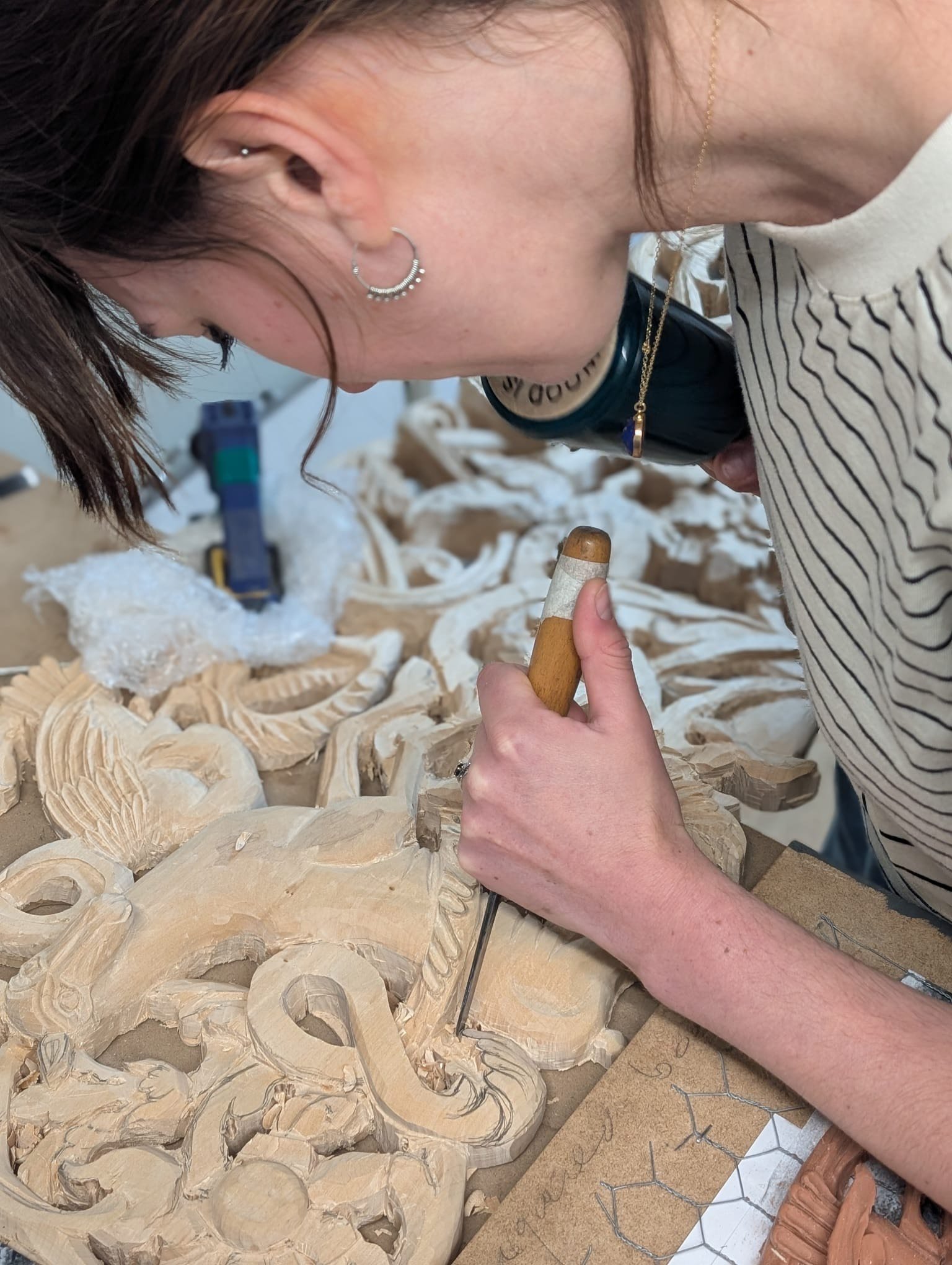
The Ark of Zelva
The journey so far
Tree of Life is an ongoing project to recreate the lost Ark of Zelva, a 19th-century Eastern European Torah ark destroyed during the Holocaust. Through traditional carving techniques and careful study of archival photographs, this work honours a lost artform while exploring themes of grief, memory, and cultural continuity. As much a reconstruction as a personal act of mourning, the project sits at the intersection of history and healing—where wood becomes a vessel for both loss and renewal.
Carving is an act of listening. The wood speaks in the way it accepts or resists the chisel. A good cut produces a smooth, clean sound; a bad cut tears, splinters, protests. Often, I can hear the shifts in the grain before I can see them.
I’m in the early stages within the Ark of Zelva project, and it’s thrilling to share that process. These carvings are more than just decorative — they’re part of a larger story I’m trying to tell, one that honours survival, memory, and continuity.
While the lines and forms are still rough, the presence of the carving can already be felt.
Carving
My Story
I’m a woodcarver and writer based in Brighton. My practice sits at the intersection of craft, memory, and history—often working with themes of grief, nature, and material storytelling.
After completing an MA in Art History, I realised that I didn’t just want to study the historical objects that fascinated me—I wanted to make them. That decision led me to train in traditional woodcarving at City & Guilds of London Art School, where I studied traditional techniques and developed a deep connection to process, form, and material.
This website is both a digital studio and a storytelling space: part portfolio, part journal, part library-in-the-making.




